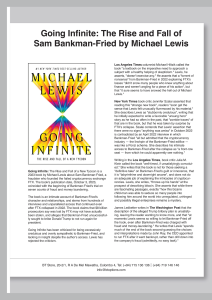From Russia to Mexico, governments are defaulting on their promises. Their people are plunged in poverty. Money they thought they had is simply not there. Besides, the US government’s projections show its debt going almost straight up. But long before debt goes to infinity, individuals go broke. The government has another choice. They can print money to get out of their fix. Then inflation takes off, interest rates take off, and the dollar becomes worthless. The US government will either default on its obligations or will pay everything in full – with worthless money.
The outlook is a gloomy one, therefore, for the entire world. Japan and the US are economic superpowers and they are bankers to the world. The other major banking systems in the world are there fore primarily linked to the US banking system. The US dollar plays a major role in the settlement of trade debts between nations. Likewise Japan, a banker to the world, loaned 60% of what the rest of the world borrowed. Even the US government borrows from Japan to sustain its economy. But Japan has been in a recession for 4-5 years, and is on the brink of a full-scale depression..
What Experts Say
With America’s looming debt crisis and Japan’s great depression, banks are facing the greatest challenge of their lives. No doubt, American, British and Japanese banks use technology to improve their service/delivery standards. In money transmission and settlement of bills these banks surpass any other system through the use of innovative techniques.
But in the final analysis this will not help much. While US companies scoop 5%-7% net profit margins, Japanese firms make no business sense with their 1% sprea-ds. Public and private sector debt has been rising likewise. Trillions of dollars are locked up in businesses. The time of reckoning may be coming. Japan’s 21 largest banks admit to US$200 billion in bad loans.
That is bigger than the loan bail out to Mexico! But US experts say Japanese bad loans are really US$400 to US$500 billion and could be as high as US$700 billion. Nobody really knows.
Similarly, in the US bad loans are piling up. The assets on a US bank’s balance sheet cannot be fully recoverable. Banks are not really making profits. Even though businesses pay for their loan interest, their core-assets are worth less than their borrowings! In a crisis, collateral – stock and real estate – can tumble. There is evidence to show that bank assets are therefore going bad and are becoming uncollectible.
Government debt in the US is sky rocketing. Bank loans to the commercial sector are in trillions. Are they all recoverable? There is a possibility that the US dollar and the Japanese yen, may soon become worthless. In such an event depositors will find their savings completely wiped out! Other nations’ financial systems too would be rocked. Sri Lanka might be the first to follow suit.
All avenues are exhausted by the war of attrition. Funding the budget deficit and escalating debt burden requires more than imagination. Tax revenues are drying up. A heavy debt loan is a death sentence! But printing money is an attractive quick-fix. When this occurs money loses its meaning.
The banking system is based on confidence. That is how banks create money. For instance, a bank deposit of Rs 500,000 may lead to a loan of Rs 400,000 which increases the money supply from Rs 500,000 to Rs 900,000. (The Rs 100,000 not lent forms “liquid assets which the bank keeps to cover depositors’ claims for immediate repayments).
Thus the Rs 400,000 originally lent may be deposited with the same bank. This enables a bank to repeat the cycle of money creation. This is known as the money. multiplier effect. The banking system is therefore like an inflated balloon, upheld by investor confidence. The faster the economy grows, the bigger the balloon gets. The lynchpin of economic confidence stems from confidence in the banking system.
Dry Run
The moment this confidence is lost the entire banking system crumbles. Depositors, to salvage their savings will cause a run on the bank. Then banks will crash, one after another.
This is because if money supply increases more than it should, it deeply effects a nation’s economy. More money in the system means more spending. More spending engenders greater demand for goods and services. If there is no corresponding rise in output then prices go up sharply. Inflation sets in.
Some doomsday financial analysts have predicted that the New York Stock Exchange will collapse in 1998. It will be followed by the disintegration of thousands of wildcat banks. The smaller ones first. Then the bigger ones later. One by one the big dominoes they speculate, will fall with the collapse of the entire world monetary system.
Historian and science fiction writer, HG Wells, in “The Time Machines” foresaw a regenerative period. The end of the 20th century would accompany what he described as the “end of time”. Wells, saw the actual end of the present order of things. He also predicted that like the phoenix, humanity would rise from the ashes again. A new consciousness would emerge. The new scientific and economic systems, he said would be based on a technological marvel!
If we look at modern banking on a superficial level, we are not far from the truth. The days of notes and coins and traditional cheque books are over. They ran the old economic locomotive. Now they are being replaced by the establishment of a new cashless society.
If we look at modern banking on a superficial level, we are not far from the truth. The days of notes and coins and traditional cheque books are over. They ran the old economic locomotive. Now they are being replaced by the establishment of a new cashless society.
Credit cards, the Mondex chip, the smart cards, home/tele-banking through modems and computers are the new technologies. But this is really all part of the old banking order. Here the laws of economics are based on the fundamental principle of scarcity. It dictates that to divide is to lessen.
The technological marvel Wells envisaged in the life of nations was in a new economy, based on shared interests. With the advent of digital money in cyberspace, traditional notes, coins and retail banking are all being purged from the system. In future, digital money in which all aspects are controlled by the Monetary Authority will probably surpass electronic banking offered today. It will involve a process of reversed psychology. Something defying our present value systems!
Here, “the re-distribution of wealth will engender greater output”. To share is to increase – such a principle would be applied to the entire community. A banking system revolving around this paradigm is likely to transcend the sum of its parts.
Everything in the physical. world is an expression of an idea. If this concept is accepted, then the whole belief in false association between giving and losing will disappear. Thus, this will be the “idea-multiplier effect” in the creation of a new digital banking. The “new consciousness” would change the landscape of traditional banking forever.







